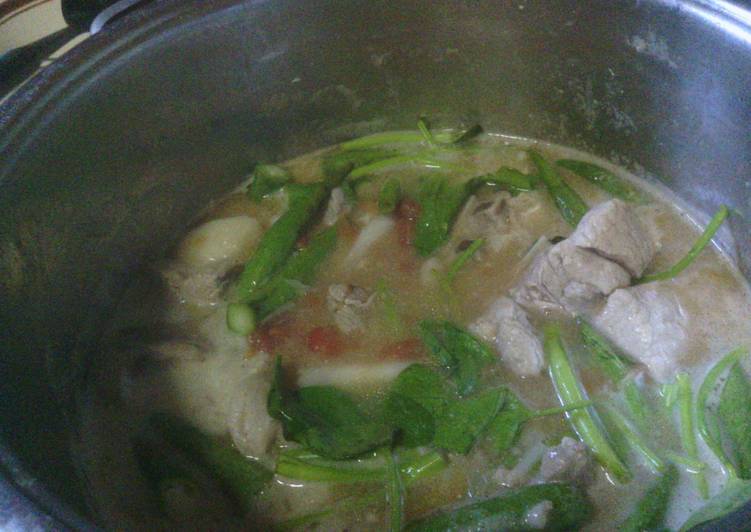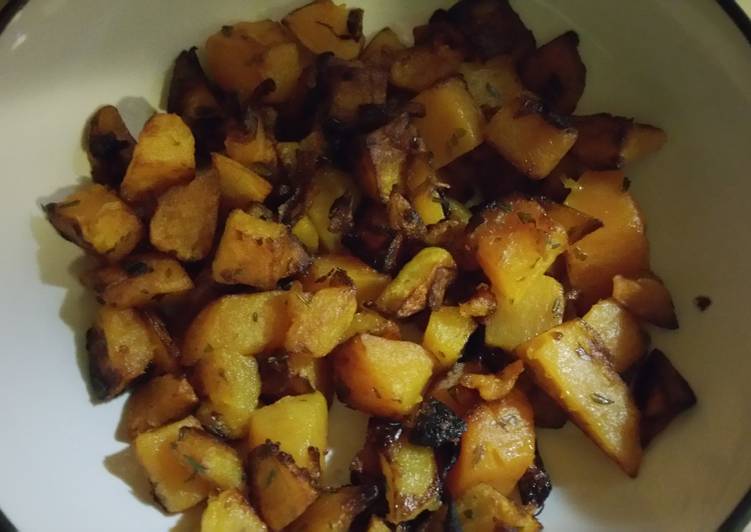
Hello everybody, it is Brad, welcome to my recipe site. Today, I’m gonna show you how to make a distinctive dish, pork rib sinigang. One of my favorites. For mine, I will make it a bit unique. This is gonna smell and look delicious.
Pork Rib Sinigang is one of the most popular of current trending meals in the world. It’s appreciated by millions every day. It is easy, it is quick, it tastes yummy. Pork Rib Sinigang is something which I have loved my whole life. They are nice and they look fantastic.
To begin with this particular recipe, we must first prepare a few ingredients. You can have pork rib sinigang using 15 ingredients and 13 steps. Here is how you cook it.
The ingredients needed to make Pork Rib Sinigang:
- Take Pork Ribs
- Get Kangkong Leaves (river spinach, water spinach, swamp cabbage)
- Take Labanos (radish)
- Get Gabi (taro root)
- Make ready Okra (lady's fingers or gumbo)
- Make ready Tomato
- Make ready Red Onion (Bermuda Onion)
- Make ready Salt
- Take Patis (fish sauce)
- Take Option 1 Tamarind Stock (Instant)
- Prepare Knorr Sinigang Mix (44 grams)
- Take Hot Water
- Get Option 2 Tamarind Stock (Natural)
- Prepare Tamarind
- Make ready Water
Instructions to make Pork Rib Sinigang:
- OPTION 1 TAMARIND STOCK: If using the instant tamarind stock, dissolve half of the packet of Knorr Sinigang Mix into 3 cups of hot water. Set aside.
- OPTION 2 TAMARIND STOCK: If using the natural tamarind stock, you would have to prepare it before starting with the main dish. Wash thoroughly and then boil the large tamarinds in 2 cups of water over medium heat until very tender. Make sure to cover the pot to avoid the water from evaporating; and when it does, just add half cups at a time. Once tender, remove the tamarind from the pot and set aside for awhile. Get a large metal strainer and put it over the pot where you boiled the tamarind. Put the tamarind on the strainer and squeeze the juice into the pot. Do not worry about the shells as they would easily break with the pressure applied during squeezing. Once the tamarind juice is thoroughly extracted, discard the shell and seeds from the strainer. Set aside the tamarind stock. It would be best for you to prepare extra stock so you can use it to enhance flavor if you wish to increase the amount of soup.
- PREPARATION 1: Slice the meaty parts of the pork ribs into cubes and leave the bony parts the way they are.
- PREPARATION 2: Wash and detach the kangkong leaves from the stalk. You may slice the soft parts off the stalk but make sure to leave out the hard parts.
- PREPARATION 3: Wash, peel and slice the labanos crosswise to make flat round pieces. Wash and slice the okra crosswise to make cylindrical pieces.
- PREPARATION 4: Wash, peel and slice the gabi into large cubes.
- PREPARATION 5: Slice the tomatoes into quarters or eighths, whichever suits you for sauteing; and dice the onions.
- Saute the pork in tomatoes and onions. Allow the surface of the pork to cook, constantly mixing until the tomatoes are soft and the onion is clear.
- Add the tamarind stock into the sauteed pork. Mix thoroughly and cover. Allow the pork to cook completely until tender.
- Add the gabi, labanos and okra. Cook until the gabi and okra are tender and the labanos is clear. To prevent the stock from drying up, add half cups of water at a time.
- Enhance the flavor through adding the left-over sinigang mix or extra tamarind stock. Balance the flavor out using salt or patis. The natural taste of the soup is flavorfully sour, so it is best to add the remaining sinigang mix or tamarind stock gradually for you to capture what suits your taste well.
- Finally, pitch in the kangkong leaves and let it simmer for 2 to 3 minutes in low fire. Do not overcook the kangkong by putting it in the soup longer. Remember that it cooks some more even after putting the pot out of the fire.
- Enjoy the dish with steamed rice; and this dish could also be nicely paired up with "lechon kawali" (deep fried pork belly).
So that’s going to wrap it up for this exceptional food pork rib sinigang recipe. Thanks so much for reading. I am sure you can make this at home. There’s gonna be more interesting food at home recipes coming up. Don’t forget to bookmark this page on your browser, and share it to your loved ones, colleague and friends. Thank you for reading. Go on get cooking!

